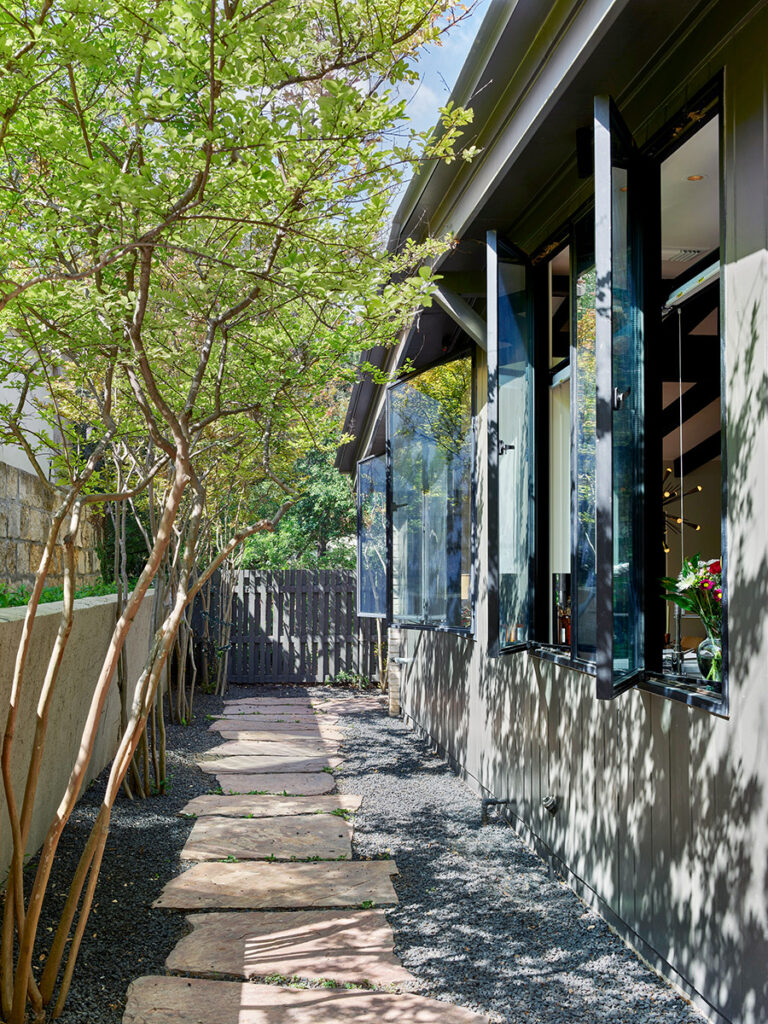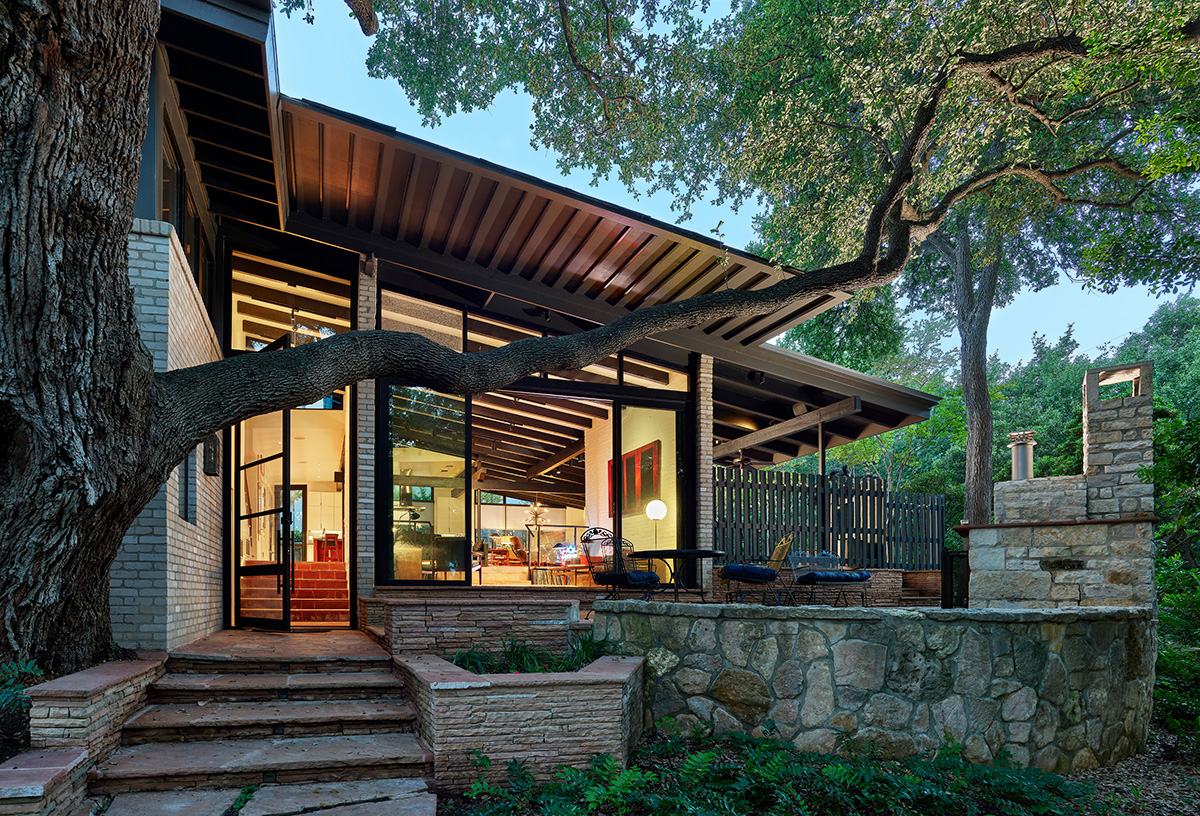We’re thrilled to share our recent feature in The Wall Street Journal titled How Do Conservation Experts Make Their Own Homes More Energy Efficient? This article highlights our decade-long journey transforming a 1957 O’Neil Ford house in San Antonio into a living laboratory for sustainable architecture.
A Step-by-Step Approach to Energy Efficiency
The Wall Street Journal feature reveals how meaningful transformation happens gradually through thoughtful, layered improvements. As architect John Grable explains in the article, his carefully renovated home demonstrates that sustainability is both practical and essential.
The article explores our comprehensive approach:
- Solar Investment: Our solar panel installation paid for itself in just eight years
- Strategic Design Elements: Deep overhangs providing shade for large glass walls
- Advanced Materials: Steel windows with low-E glass that resist temperature extremes while enabling natural cross ventilation
- Thoughtful Additions: Ceiling fans, solar shades, and LED lighting that significantly reduce energy consumption
- Practical Solutions: Gas fireplace that replaces mechanical heating, tankless water heater, and low-flow fixtures
- Natural Cooling: Native trees planted strategically to shade and cool the entire property
- Future Innovations: A rain screen system to improve moisture management and temperature control

Windows on the side of John Grable’s home. PHOTO: TIM HURSLEY
Our Living Experiment in Sustainability
John Grable’s 67-year-old home has become a true living experiment in energy efficiency. The article showcases how these practical improvements integrate seamlessly with beautiful design.
What makes this project particularly meaningful is the proof that sustainable transformation doesn’t require complete rebuilding. Instead, thoughtful layering of improvements over time has created a home that’s both environmentally responsible and aesthetically pleasing.
Perhaps most importantly, these strategic, layered improvements honor and enhance the original design foundation created by renowned architect O’Neil Ford in the 1950s. Rather than compromising the mid-century character of the home, our sustainable interventions have actually enriched its architectural integrity. The sustainability features bring the structure firmly into the modern era while preparing it for the future, ensuring this architectural gem will live on well beyond its 1950s roots—proving that energy efficiency and design excellence can not only coexist but strengthen one another across generations.
Every home has its own story and potential for transformation. Our approach is always collaborative and begins with listening. We welcome conversations at any stage—whether you’re just beginning to explore possibilities or have specific sustainability goals in mind.
View the full 57 Ford project gallery.
View the Full Article
Read the Full WSJ Article (subscription required)
